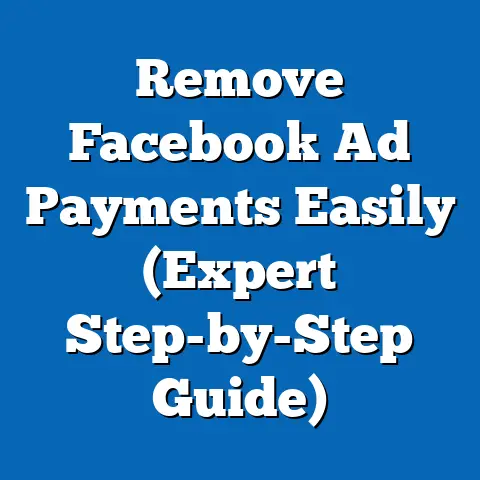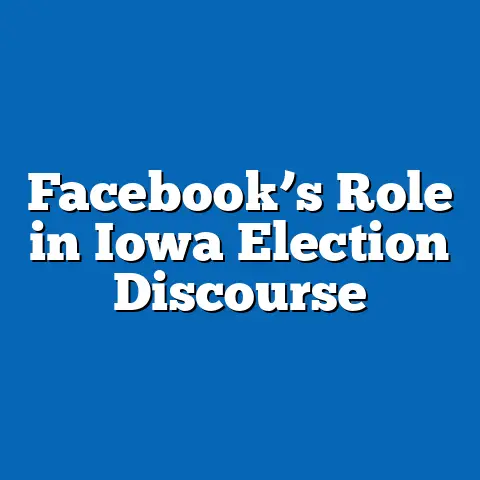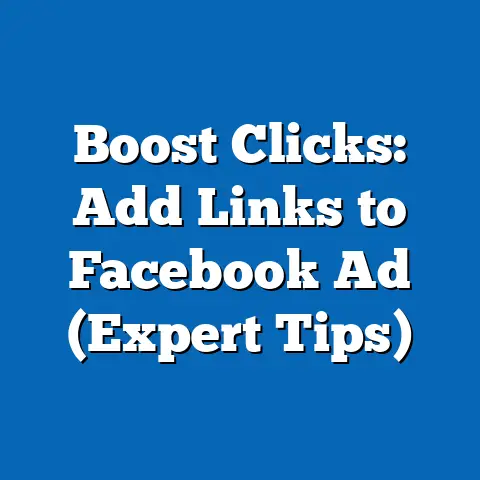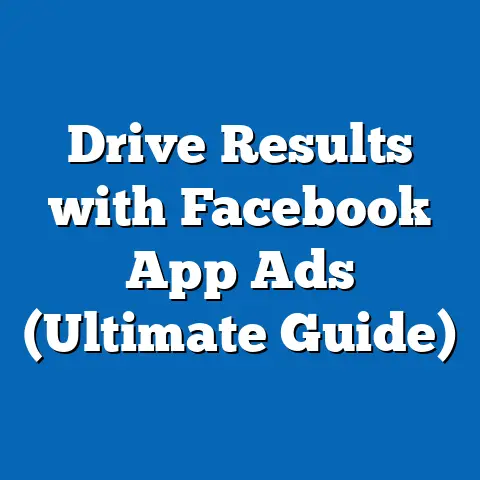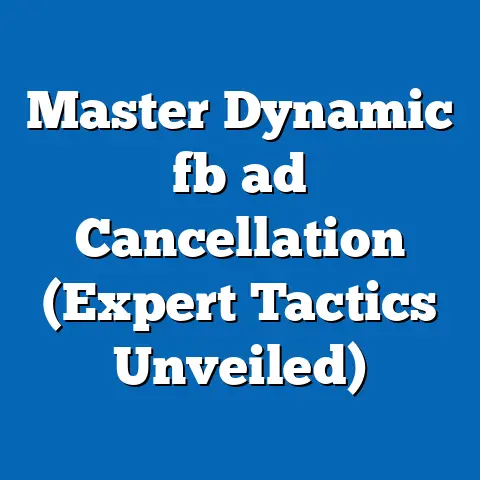Boost Sales with Facebook Shapewear Ads (Pro Tips)
Facebook advertising is a powerhouse for businesses across industries, but it’s particularly potent in the fashion world. And within fashion, the shapewear niche is ripe with opportunity. I’ve seen firsthand how a well-executed Facebook ad campaign can catapult a shapewear brand from obscurity to a household name. Blending comfort, fashion, and functionality is the key to creating a unique selling proposition (USP) that resonates with today’s consumers.
Shapewear isn’t just about slimming anymore; it’s about confidence, comfort, and style. Its popularity is surging across various demographics, and effective advertising is the lever that can significantly boost your sales. In this guide, I’ll share pro tips that I’ve learned over years of running Facebook ads in this niche to help you maximize your impact. Let’s dive in!
1. Understanding the Shapewear Market
The shapewear market is booming, and it’s essential to understand its current dynamics if you want to succeed. Recent statistics show a significant surge in the industry, driven by increased awareness and acceptance of shapewear as a daily essential rather than just a special occasion item.
Market Growth & Consumer Preferences: The global shapewear market is projected to reach \$5.6 billion by 2028, growing at a CAGR of 8.3% from 2021. This growth is fueled by evolving consumer preferences, with a shift towards comfort and versatility. I’ve noticed that consumers are no longer just looking for compression; they want shapewear that seamlessly integrates into their everyday wardrobe, offering both support and style.
The Impact of Social Media: Social media plays a pivotal role in shaping purchasing behavior. Platforms like Instagram and TikTok have popularized shapewear through influencer endorsements and user-generated content. I’ve observed that ads featuring real people wearing shapewear in their daily lives tend to perform exceptionally well.
Key Demographic Segments: The shapewear market caters to a diverse range of demographics. While women aged 25-44 remain a primary target, there’s a growing demand from younger consumers (18-24) and older adults (45+). Each segment has unique needs:
- 18-24: Fashion-forward styles, affordability, and comfort for everyday wear.
- 25-44: Versatility, support for postpartum or weight fluctuations, and seamless designs for professional attire.
- 45+: Comfort, back support, and solutions for age-related body changes.
Analyzing Competitors: Take a close look at what successful shapewear brands are doing on Facebook. Brands like SKIMS, Spanx, and Yummie have mastered the art of Facebook advertising by focusing on inclusivity, body positivity, and showcasing their products on diverse body types. I always advise clients to perform a competitor analysis using Facebook’s Ad Library to see what kind of ads are currently running, what messaging they’re using, and what audiences they’re targeting.
Takeaway: The shapewear market is dynamic and diverse. Understanding the latest trends, consumer preferences, and competitor strategies is crucial for crafting effective Facebook ad campaigns.
2. Crafting Captivating Ad Copy
Your ad copy is the voice of your brand, and it needs to resonate with your target audience. When it comes to shapewear, it’s about more than just selling a product; it’s about selling confidence and comfort.
Addressing Pain Points and Desires: The most effective ad copy addresses the specific pain points and desires of your target audience. For example:
- Pain Point: “Struggling with muffin top in your favorite jeans?”
- Desire: “Want to feel confident and supported all day long?”
I’ve found that using customer testimonials or reviews in your ad copy can add credibility and build trust.
Persuasive Language and Emotional Triggers: Use persuasive language that evokes emotion and encourages action. Here are some examples:
- “Experience the ultimate comfort and support.”
- “Rediscover your confidence with our revolutionary shapewear.”
- “Feel amazing in your clothes, without sacrificing comfort.”
Calls-to-Action (CTAs): Your CTA should be clear, concise, and compelling. Here are some effective CTAs for shapewear ads:
- “Shop Now and Get 20% Off!”
- “Discover Your Perfect Fit Today!”
- “Transform Your Silhouette – Shop Now!”
- “Learn More and Find Your Perfect Style!”
Blending Styles in Messaging: Emphasize the fashion-forward aspects alongside comfort and support features. For example:
- “Our shapewear is designed to be seen, not hidden. Wear it under your favorite dress or as a stylish layering piece.”
- “Experience the perfect blend of fashion and function with our seamless shapewear collection.”
- “Comfortable enough to wear all day, stylish enough to wear on its own.”
Example Ad Copy: “Tired of shapewear that’s uncomfortable and unflattering? Our new collection offers the perfect blend of style and support, so you can feel confident and comfortable all day long. Shop now and get 20% off your first order!”
Takeaway: Compelling ad copy speaks directly to your target audience’s needs and desires, using persuasive language and clear CTAs. Blending style and comfort in your messaging is crucial for attracting modern shapewear consumers.
3. Visual Storytelling Techniques
In the visual world of Facebook, your images and videos are your most powerful assets. For shapewear, it’s all about showcasing the product in a way that’s both aspirational and relatable.
Best Practices for Photography:
- Lighting: Use natural, flattering lighting that highlights the product’s features without casting harsh shadows.
- Angles: Capture the shapewear from multiple angles to showcase its design and construction.
- Models: Choose models that reflect your target audience in terms of age, body type, and ethnicity. I’ve found that diversity and inclusivity resonate strongly with consumers.
Lifestyle vs. Product-Only Images:
- Lifestyle Images: Show the shapewear being worn in real-life situations, such as under a dress or during a workout. These images help consumers visualize how the product will fit into their lifestyle. I’ve seen these perform significantly better than product-only images.
- Product-Only Images: Showcase the shapewear on a mannequin or against a clean background to highlight its details and features.
Creating Video Content: Video is incredibly engaging and allows you to tell a more compelling story. Here are some video ideas for shapewear ads:
- Behind-the-Scenes Footage: Show the process of designing and manufacturing your shapewear to build trust and transparency.
- Customer Testimonials: Feature real customers sharing their experiences and showcasing how the shapewear has improved their confidence.
- Styling Tips: Offer styling tips on how to wear shapewear with different outfits. This adds value and positions your brand as a fashion authority.
- Demonstrations: Show before-and-after transformations to highlight the effectiveness of your shapewear.
Visual Examples:
- Before & After Photos: These can be powerful, but be sure to use them ethically and avoid unrealistic or overly-edited images.
- 360° Product Views: Allow customers to see the shapewear from all angles, highlighting its design and construction.
- GIFs: Use short, animated GIFs to showcase the shapewear’s features and benefits in a visually engaging way.
Takeaway: Use high-quality visuals that showcase your shapewear in a way that’s both aspirational and relatable. Video content is particularly effective for storytelling and building trust.
4. Targeting the Right Audience
Facebook’s targeting options are incredibly powerful, allowing you to reach the ideal customer for your shapewear.
Demographic Targeting: Target users based on age, gender, location, education, and more. For shapewear, consider targeting women aged 25-44 who live in urban areas and have an interest in fashion and fitness.
Interest-Based Targeting: Target users based on their interests, hobbies, and activities. Some relevant interests for shapewear include:
- Fashion
- Fitness
- Weight Loss
- Body Positivity
- Style
- Lingerie
Lookalike Audiences: Create lookalike audiences based on your existing customers. Facebook will find users who share similar characteristics and behaviors with your best customers. I’ve seen lookalike audiences consistently outperform other targeting options.
Custom Audiences: Create custom audiences based on past purchasers, website visitors, and email subscribers. These audiences are highly engaged and more likely to convert.
A/B Testing: A/B test different audience segments to see which ones perform best. This will help you refine your targeting strategy and optimize your ad performance. For example, test different age ranges, interests, and demographics to see what resonates most with your audience.
Example Targeting Strategy:
- Audience 1: Women aged 25-44, located in urban areas, interested in fashion and fitness.
- Audience 2: Lookalike audience based on past purchasers.
- Audience 3: Custom audience of website visitors who have viewed shapewear products.
Takeaway: Facebook’s targeting options allow you to reach the ideal customer for your shapewear. A/B test different audience segments to optimize your ad performance and maximize your ROI.
5. Analyzing Ad Performance
Running Facebook ads is not a “set it and forget it” activity. You need to constantly monitor and analyze your ad performance to make informed decisions and optimize your campaigns.
Key Metrics to Track:
- Engagement Rate: Measures how much users are interacting with your ad (likes, comments, shares). A high engagement rate indicates that your ad is resonating with your audience.
- Click-Through Rate (CTR): Measures the percentage of users who click on your ad after seeing it. A high CTR indicates that your ad copy and visuals are compelling.
- Conversion Rate: Measures the percentage of users who complete a desired action (e.g., purchase, sign-up) after clicking on your ad. A high conversion rate indicates that your landing page is effective.
- Return on Ad Spend (ROAS): Measures the revenue generated for every dollar spent on advertising. A high ROAS indicates that your ad campaigns are profitable.
Using Facebook Ads Manager: Facebook Ads Manager provides a wealth of data and insights on your ad performance. Use it to track your key metrics, identify trends, and make informed decisions.
Setting Up Conversion Tracking: Conversion tracking allows you to track the actions that users take on your website after clicking on your ad. This is essential for measuring the effectiveness of your campaigns and optimizing for conversions.
Using Facebook Pixel: The Facebook Pixel is a small piece of code that you install on your website. It allows you to track website visitors, measure conversions, and create custom audiences. I recommend every business using Facebook Ads to install the Facebook Pixel.
Analyzing Performance Data:
- Identify High-Performing Ads: Focus on the ads that are generating the most engagement, clicks, and conversions.
- Identify Underperforming Ads: Pause or modify the ads that are not performing well.
- Refine Your Targeting: Adjust your targeting based on the demographics, interests, and behaviors of your most valuable customers.
- Optimize Your Ad Copy and Visuals: Experiment with different ad copy and visuals to see what resonates best with your audience.
Takeaway: Analyzing your ad performance is crucial for optimizing your campaigns and maximizing your ROI. Use Facebook Ads Manager, conversion tracking, and the Facebook Pixel to gather data and make informed decisions.
6. Leveraging User-Generated Content
In today’s digital landscape, trust is paramount. User-Generated Content (UGC) is an incredibly powerful tool for building trust and authenticity around your shapewear brand.
Why UGC Matters: UGC provides social proof and demonstrates that real people are using and loving your products. It’s more credible than traditional advertising because it comes directly from customers.
Strategies for Encouraging UGC:
- Run Contests and Giveaways: Encourage customers to share their photos and experiences for a chance to win prizes.
- Ask for Reviews and Testimonials: Actively solicit reviews and testimonials from your customers.
- Create a Branded Hashtag: Encourage customers to use a branded hashtag when sharing their photos on social media.
- Partner with Influencers: Collaborate with influencers to create UGC that showcases your shapewear in a positive light.
Incorporating UGC into Facebook Ad Campaigns:
- Create Testimonial Ads: Feature real customers sharing their experiences with your shapewear.
- Showcase UGC in Your Ad Copy: Include quotes and snippets from customer reviews in your ad copy.
- Use UGC in Your Visuals: Replace traditional stock photos with real photos of customers wearing your shapewear.
- Create Community-Driven Content: Encourage customers to share their styling tips and body-positive messages.
Example UGC Campaign:
- Run a contest where customers share photos of themselves wearing your shapewear with the hashtag #MyShapewearConfidence.
- Feature the winning photos in your Facebook ad campaigns, showcasing diverse body types and styles.
- Include quotes from customer reviews in your ad copy, highlighting the comfort and confidence that your shapewear provides.
Takeaway: User-Generated Content is a powerful tool for building trust and authenticity around your shapewear brand. Encourage customers to share their experiences and incorporate UGC into your Facebook ad campaigns.
Conclusion
Facebook advertising is a powerful tool for boosting sales in the shapewear niche. By understanding the market, crafting compelling ad copy, using high-quality visuals, targeting the right audience, analyzing your ad performance, and leveraging user-generated content, you can create successful ad campaigns that drive results.
Remember that blending styles and understanding the target market are key to creating ads that resonate with your audience. Shapewear is not just about slimming; it’s about confidence, comfort, and style.
Now, I encourage you to implement these pro tips and start seeing the results for yourself. What are your experiences with Facebook ads and shapewear? Share your thoughts and insights in the comments below!

